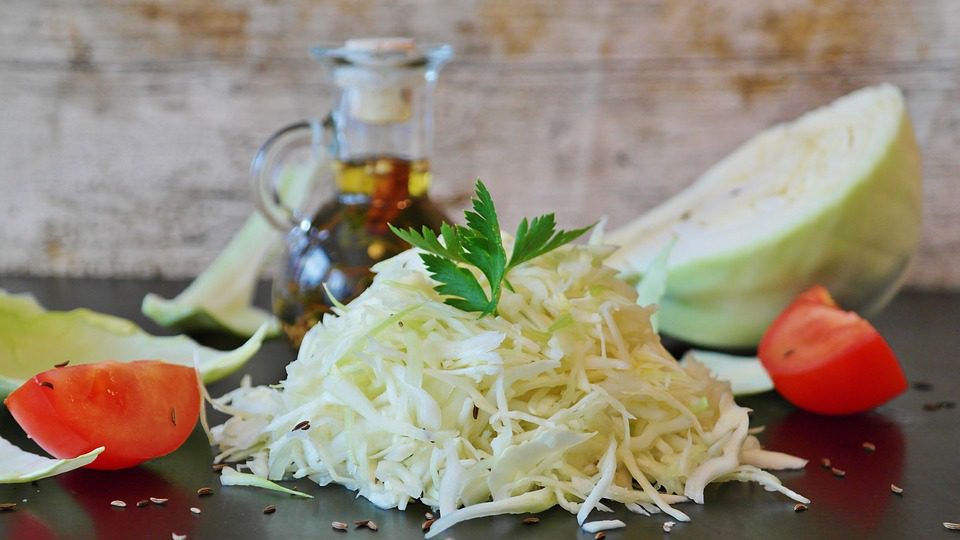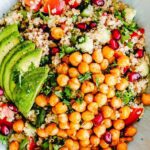Low Fodmap Diet Plan
Low Fodmap Diet Plan – Are you a vegetarian dealing with digestive issues? Look no further! The Low FODMAP Diet Plan is here to help you alleviate discomfort and improve your digestive health. This comprehensive guide will provide all the necessary information and tasty meal ideas to support your vegetarian lifestyle while following the Low FODMAP Diet Plan.
What is a Low FODMAP Diet?
Understanding FODMAPs
To embark on the Low FODMAP Diet, it’s essential to comprehend FODMAPs. FODMAPs (fermentable oligosaccharides, disaccharides, monosaccharides, and polyols) are a class of carbohydrates that, in some people, induce digestive pain.
How the Low FODMAP Diet Works
The Low FODMAP Plan involves restricting or minimizing the intake of high FODMAP foods for a specific period, typically 2-6 weeks. This elimination phase helps identify trigger foods. Afterward, selected FODMAPs are reintroduced systematically to determine individual tolerance levels.


Low FODMAP Diet Plan for Vegetarians
High FODMAP Foods to Avoid
During the elimination phase of the Low Carb Meal Plan, it’s crucial to steer clear of high FODMAP foods that can trigger digestive symptoms. Here are some common high-FODMAP foods to avoid:
- Wheat: Products containing wheat, such as bread, pasta, and cereals.
- Onions: Including onion powder, shallots, and spring onions.
- Garlic: Fresh garlic, garlic powder, and garlic-infused oils.
- Legumes: Beans, chickpeas, lentils, and soybeans.
- Cabbage: All types of cabbage, including Brussels sprouts and cauliflower.
- Mushrooms: Certain varieties like shiitake and button mushrooms.
- Dairy: Milk, yogurt, cheese, and ice cream.
Low FODMAP Foods to Enjoy
While the elimination phase may initially seem restrictive, plenty of delicious low-FODMAP options are still available to vegetarians. Embrace these foods during the Low FODMAP Diet Plan:
- Quinoa: A versatile grain that serves as an excellent protein source.
- Leafy Greens: Spinach, kale, and lettuce varieties.
- Berries: Blueberries, strawberries, and raspberries.
- Tomatoes: Enjoy fresh tomatoes or canned tomato products.
- Bell Peppers: Red, green, and yellow bell peppers.
- Zucchini: A versatile vegetable perfect for stir-fries and salads.
Meal Ideas for the Low FODMAP Diet
We are maintaining a well-rounded and flavorful diet while on the Low Carb, Meal Plan is crucial.
Here are some excellent meal ideas to get you started on your culinary journey:
- Breakfast: Quinoa porridge with fruit and maple syrup drizzled on top.
- Lunch: Zucchini noodles with roasted bell peppers, cherry tomatoes, and parmesan cheese on top.
- Snack: Rice cakes topped with almond butter and sliced banana.
- Dinner: Quinoa and vegetable stir-fry with tofu and a low FODMAP soy sauce.
- Dessert: Baked apples with cinnamon and a scoop of lactose-free yogurt
FAQs about the Low FODMAP Diet Plan
Question 1. AS A VEGETARIAN, can I follow the Low FODMAP Diet Plan?
Answer 1. Absolutely! The Low Carb Meal Plan can be tailored to suit vegetarian lifestyles. You can enjoy various delicious low-FODMAP meals with careful planning and ingredient substitutions.
Question 2. Is the Low FODMAP Diet Plan suitable for long-term use?
Answer 2. The Low Carb Meal Plan is intended to be followed only for a while. It serves as a diagnostic tool to identify trigger foods. Once you’ve placed your triggers, you can modify your diet accordingly.
Question 3. Can I eat at Soul Sante Cafe while following the Low FODMAP Diet Plan?
Answer 3. Yes! Soul Sante Cafe understands the needs of individuals following the Low Carb Meal Plan. They offer a range of delicious vegetarian options that adhere to low FODMAP principles. Inform the staff about your dietary requirements, and they will gladly assist you.
Question 4. Are any risks associated with the Low FODMAP Diet Plan?
Answer 4. While the Low Carb Meal Plan is generally safe, consulting with a healthcare professional or registered dietitian is always recommended before making significant dietary changes. They can provide personalized guidance based on your individual needs.
Question 5. Can I reintroduce high-FODMAP foods after the elimination phase?
Answer 5. After the elimination phase, it’s essential to reintroduce FODMAPs to identify your tolerance levels systematically. This step helps create a more varied and inclusive diet while minimizing unnecessary restrictions.
Question 6. Can the Low FODMAP Diet Plan improve digestive symptoms?
Answer 6. The Low Carb Meal Plan has shown encouraging effects in lowering symptoms such as bloating, gas, and abdominal discomfort in many people with irritable bowel syndrome (IBS) or other digestive diseases. However, it is critical to seek the advice and diagnosis of a healthcare professional.
Conclusion
The Low FODMAP Diet Plan offers a fantastic opportunity for vegetarians to manage their digestive issues while enjoying a diverse and delicious diet. Following the elimination phase and reintroducing FODMAPs systematically, you can identify your trigger foods and create a personalized meal plan that caters to your specific needs. Remember, a healthy and balanced diet is essential, so consult a healthcare professional or registered dietitian for guidance on implementing the Low Carb Meal Plan into your lifestyle.







